Keeping chickens from flying is a common concern for backyard poultry keepers seeking to maintain control over their flock and prevent potential escapes or injuries. While chickens are not known for their prowess in flight, certain breeds and individuals may possess the ability to soar over fences or other obstacles.
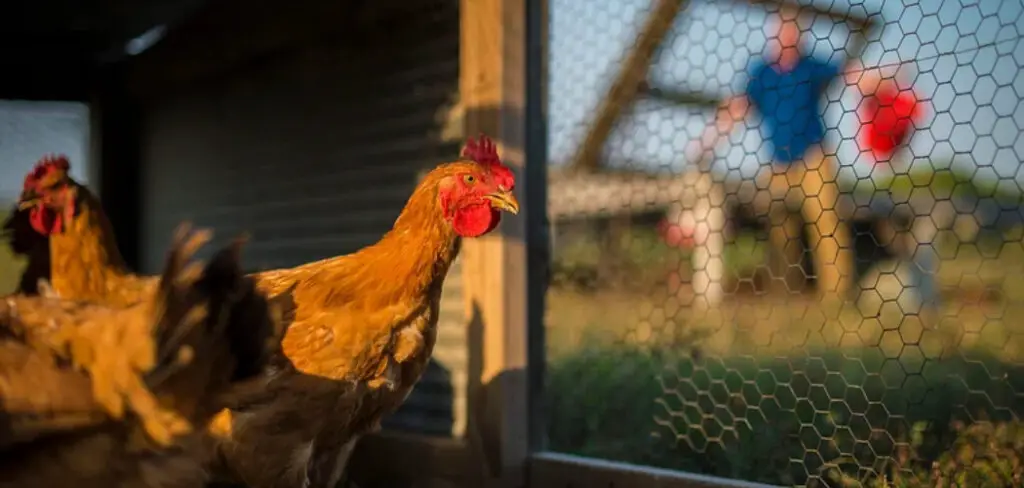
Understanding the reasons behind chicken flight and implementing effective containment strategies are essential for ensuring the safety and security of the flock. In this comprehensive guide, we’ll explore various methods and techniques on how to keep chickens from flying, from trimming flight feathers and providing adequate shelter to utilizing netting and barriers.
Whether you’re a novice chicken keeper or a seasoned enthusiast, mastering the art of preventing chicken flight is crucial for maintaining harmony within your backyard flock and safeguarding your birds from potential hazards or predators.
Importance of Preventing Chickens from Flying
Preventing chickens from flying is not merely about keeping your flock contained; it’s about ensuring their safety and promoting overall flock health. When chickens escape their designated areas, they become vulnerable to a multitude of dangers including predators, traffic, and exposure to toxic plants or substances.
Additionally, escaped chickens can cause damage to gardens, neighbor’s properties, and local ecosystems by disturbing native fauna and flora. By effectively managing your chickens’ ability to fly, you also minimize the risk of disease transmission from mingling with wild birds or entering unsanitary environments.
Beyond safety and health concerns, maintaining control over your flock fosters a calm and stable environment for your chickens, reducing stress and promoting healthier, happier birds.
Understanding Chicken Flight Abilities
Chickens’ flight abilities vary among different breeds, ages, and individual birds, making it crucial to understand these capabilities when devising strategies to keep them grounded. Unlike their wild ancestors or modern-day birds capable of sustained flight, domesticated chickens generally exhibit limited flight capabilities.
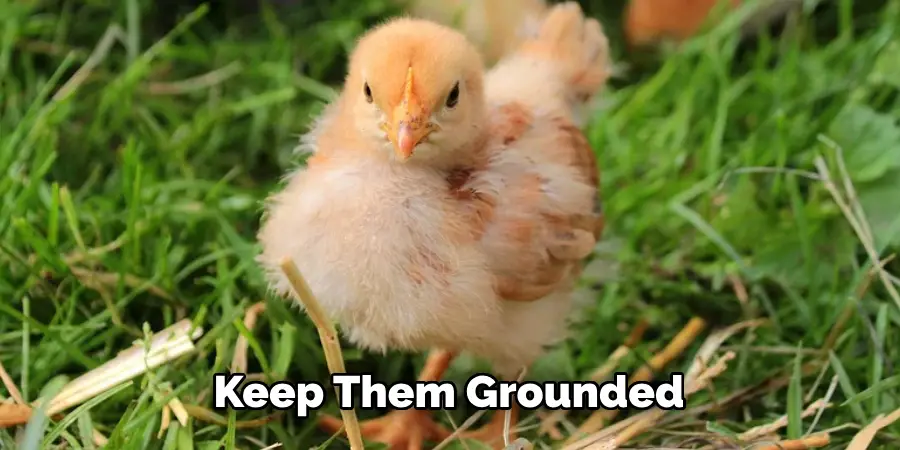
Their flights are more akin to extended leaps or glides, designed to escape predators or reach higher perches rather than for long-distance travel. Certain lightweight and agile breeds, such as the Leghorn or Araucana, are more prone to making significant leaps and may require extra measures to prevent escape.
Younger chickens and those not carrying extra weight from egg production or heavy breeds are also more likely to attempt flights over obstacles. Recognizing that a chicken’s desire to fly often stems from fear, social stress, or the need to access resources can help keepers design more effective containment and management strategies, addressing the root causes rather than merely the symptoms of their flight attempts.
Natural Instincts and Capabilities
Chickens possess innate behaviors and capabilities that can influence their attempts to fly. By nature, chickens are ground-dwelling birds that prefer to forage for food, dust bathe, and socialize on solid ground. However, their instinctual drive for survival can trigger flight responses, particularly when they feel threatened or need to evade predators.
This survival instinct is a primal trait that can lead to chickens using their limited flight abilities unexpectedly. Additionally, their natural curiosity and strong foraging instinct may also motivate them to explore beyond their enclosures in search of new sources of food or comfortable nesting sites. Understanding these natural instincts is crucial for creating a living environment that satisfies their needs while minimizing the urge to fly. By enhancing the quality of their habitat with enriching elements that fulfill their foraging, social, and safety needs, keepers can significantly reduce the occurrence of flight attempts, keeping chickens content within their designated spaces.
Factors Influencing Flight Behavior
Numerous factors can influence the flight behavior of chickens, impacting their likelihood of attempting to fly over enclosures or barriers. Understanding these factors is key to developing strategies that mitigate flight risk while caring for the well-being of the flock.
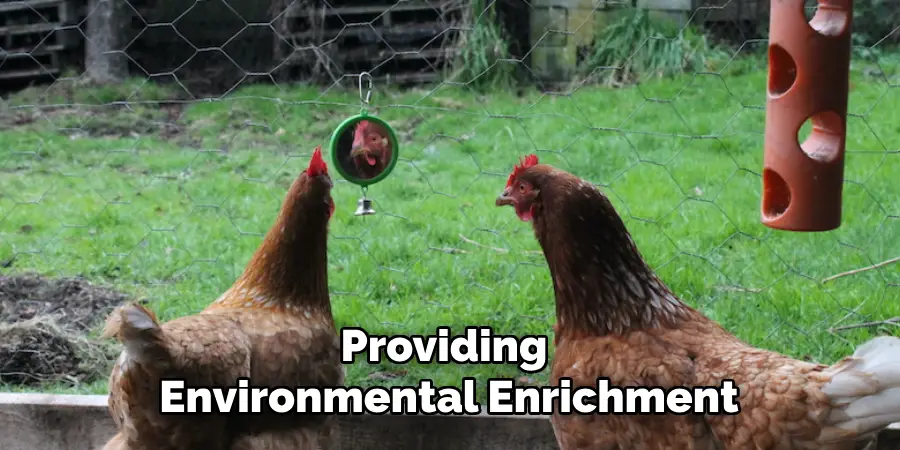
- Enclosure Size and Density: Chickens living in crowded conditions or in enclosures that are too small may attempt to fly out simply to escape the discomfort of overcrowding. Adequate space per bird reduces stress and discourages flight attempts.
- Environmental Enrichment: A lack of stimulation or foraging opportunities can lead to boredom or stress, prompting chickens to fly over enclosures in search of exploration or entertainment. Providing environmental enrichment such as perches, dust bathing areas, and different foraging materials can keep chickens engaged and less inclined to leave.
- Predator Pressure: The presence of predators or even the perception of a threat can trigger a chicken’s flight response. Implementing predator deterrents and secure sheltering can lessen the need for chickens to use flight as a means of escape.
- Availability of Resources: Inadequate access to food, water, or nesting areas may encourage chickens to fly in search of these necessities. Ensuring all chickens have easy access to ample resources can deter flight behavior prompted by basic needs.
- Flock Dynamics: Social stress, including bullying by more dominant chickens, can lead to flight attempts as bullied chickens try to escape aggression. Managing flock dynamics and ensuring a peaceful coexistence among chickens is vital.
- Weather Conditions: Extreme weather conditions can make chickens uncomfortable or panicked, leading them to seek escape. Proper shelter and environmental controls can mitigate this risk.
By attentively addressing these factors, backyard poultry keepers can create a more secure and satisfying environment for their chickens, reducing the impetus for flight and promoting the overall health and safety of the flock.
Potential Risks and Challenges
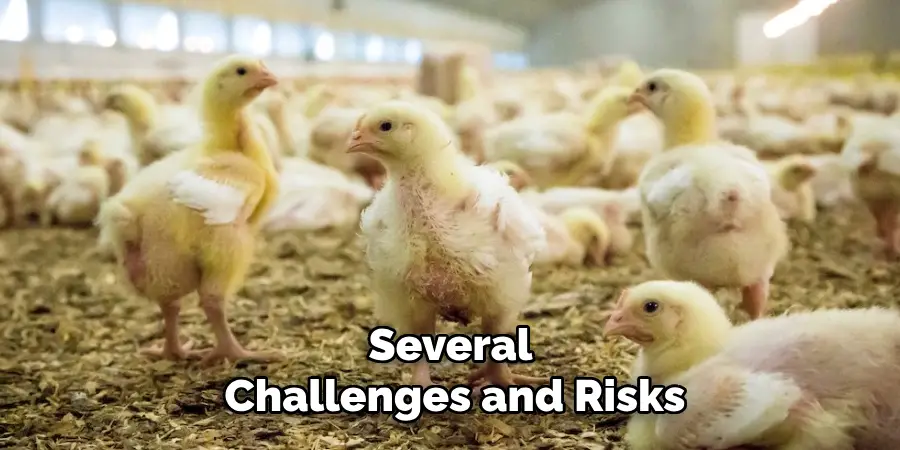
Despite best efforts in mitigating flight risks and creating an ideal environment for chickens, backyard poultry keepers may face several challenges and potential risks.
One significant challenge is balancing the need for secure, flight-preventive measures with ensuring the welfare and quality of life for the chickens. Overly restrictive environments can lead to stress and behavioral issues among the flock, negating the benefits of such measures.
Predator attacks remain a threatening risk, as even with flight deterrents and secure enclosures, determined predators may still find ways to access chickens. This necessitates a multifaceted approach to security, combining physical barriers with other deterrents like lights or sounds.
The spread of disease is another critical risk factor, especially when chickens attempt to escape and come into contact with wild birds or contaminated environments. Such interactions can introduce new pathogens to the flock, leading to outbreaks that can be difficult to control.
Additionally, the natural instincts of chickens to roost in trees or explore beyond their enclosures can make it challenging to keep them safe and contained, despite efforts to satisfy these instincts within their habitats.
Finally, legal issues and neighbor complaints can arise, especially in urban or suburban settings where chickens escaping into neighbors’ yards or public spaces can lead to disputes and potential legal implications for the poultry keeper.
Addressing these risks and challenges requires a proactive, informed approach, emphasizing the health, safety, and well-being of the chickens while considering the broader community and legal context in which they are raised.
Implementing Physical Barriers
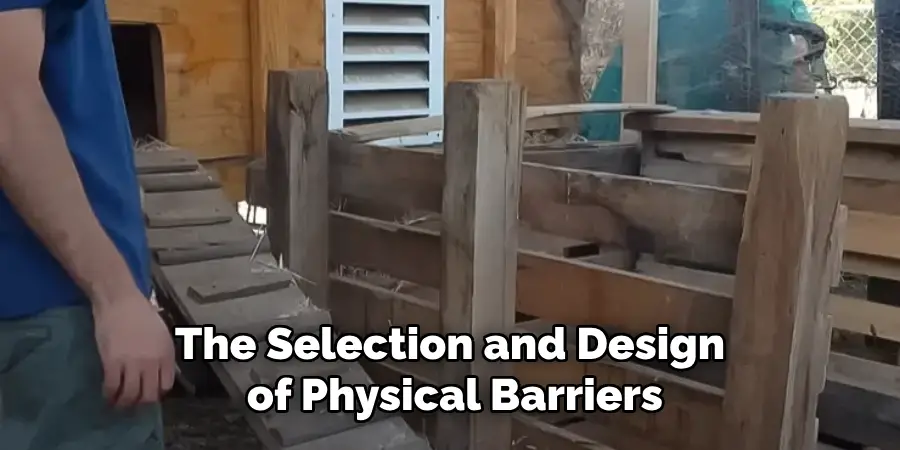
To effectively minimize the flight attempts of chickens, integrating physical barriers into the poultry enclosure is a paramount strategy. These barriers not only serve to prevent escape but also can enhance the safety and well-being of the flock. The selection and design of physical barriers should consider both the strength and the flight capabilities of the birds, ensuring enclosures are both high and secure enough to deter flight.
- Fencing Materials: Durable materials such as chicken wire, hardware cloth, or solid wood panels can be used to construct fences that are difficult for chickens to climb or fly over. The choice of material may depend on the specific threats in the area, such as predators.
- Fence Height: The fence should be tall enough to discourage flight attempts. While chickens generally cannot achieve sustained flight, they can reach surprising heights in a single jump and flap. A minimum height of 6 feet is recommended, although some breeds may require taller barriers.
- Covering the Enclosures: For particularly flight-prone or high-value breeds, covering the top of the enclosure with netting or a solid roof can provide an additional layer of security. This also helps protect chickens from aerial predators and inclement weather.
- Using Angled Fencing: Angling the top portion of the fence outward can further deter attempts to escape by disorienting the chickens when they attempt to fly or climb, making it more difficult for them to escape.
- Regular Maintenance: Ensuring that physical barriers are in good repair is critical. Over time, wear and tear or damage from predators can create vulnerabilities. Regular checks and maintenance help ensure that enclosures remain secure.
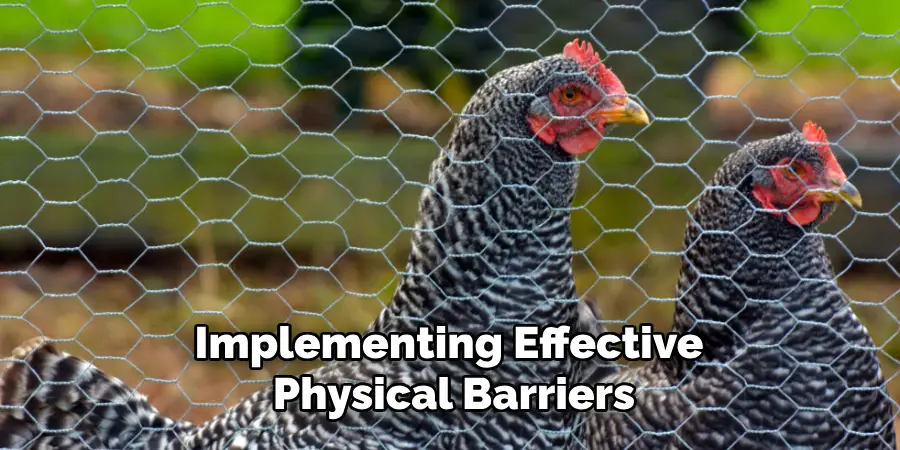
Implementing effective physical barriers requires a balance between security and the welfare of the chickens. Enclosures should not only be escape-proof but also allow for natural behaviors, providing a safe, enriching environment that meets their physical and psychological needs. By thoughtfully designing and maintaining these barriers, poultry keepers can greatly reduce the likelihood of flight attempts, keeping their flocks safe and content.
Clipping Wings to Limit Flight Ability
Another practical approach to managing flight in backyard chickens involves wing clipping, a non-painful process that involves trimming the primary flight feathers of one wing.
This method temporarily reduces a chicken’s flight capability, making it more difficult for them to achieve the lift required for escaping over fences or barriers. It’s important to note that wing clipping must be done carefully to avoid causing distress or harm to the chicken.
- Understanding the Process: Wing clipping is performed by cutting the primary flight feathers of one wing, effectively unbalancing the bird and preventing it from flying effectively. This should be done using sharp scissors or shears, and only the feathers extended beyond the wing’s covert feathers should be trimmed.
- No Pain Involved: The feathers trimmed during this process are akin to human hair or fingernails, containing no nerves. Hence, when done correctly, clipping does not cause pain to the chicken.
- Temporary Solution: Feathers grow back during molting periods, meaning that wing clipping needs to be repeated annually or semi-annually, depending on the chicken’s molting cycle.
- Considerations for Animal Welfare: While wing clipping is a widely used method among poultry keepers, it’s vital to consider the welfare of the chickens. The procedure should be performed by someone knowledgeable and experienced to ensure it’s done correctly and humanely.
- Effectiveness and Limitations: Wing clipping is most effective as part of a comprehensive approach to managing flight in chickens. It may not entirely prevent a determined chicken from escaping, especially if environmental or social stressors are not addressed, but it can significantly reduce the risk.
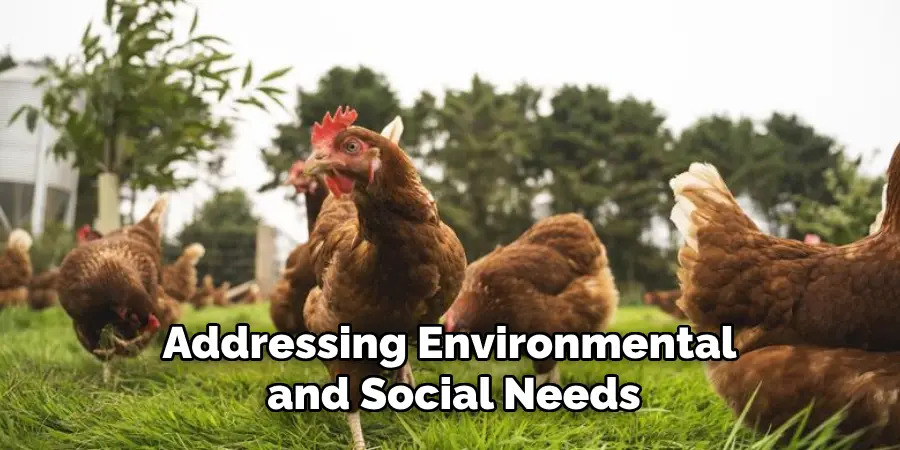
By carefully considering and effectively implementing wing clipping, along with addressing environmental and social needs, backyard poultry keepers can significantly mitigate the risks associated with chicken flight while ensuring the well-being of their flock.
10 Methods How to Keep Chickens from Flying
1. Install High Fencing:
One effective method to prevent chickens from flying is to install high fencing around the perimeter of the coop and run. Use sturdy materials such as chicken wire, hardware cloth, or welded wire mesh to create a barrier that is at least 6 feet tall. Ensure that the fencing is securely anchored to the ground to prevent chickens from digging underneath and escaping.
2. Clip Wings:
Clipping the primary flight feathers on one wing of each chicken can limit their ability to fly while still allowing them to maintain balance and mobility. Use sharp scissors to trim the feathers on one wing, cutting only the primary feathers located at the outer edge of the wing. Be careful not to cut the blood feathers, as this can cause bleeding and discomfort for the chicken.
3. Utilize Netting or Wire Covers:
Covering the top of the chicken run with netting or wire mesh can prevent chickens from flying over the fence. Choose a durable material that can withstand weather conditions and the weight of the chickens. Secure the netting or wire covers tightly to the top of the run to prevent gaps or openings where chickens could escape.
4. Lower Roosting Bars and Perches:
Chickens often use roosting bars and perches as launching points for flight. Lowering these structures to a height of 2-3 feet can discourage chickens from gaining enough height to take off. Use sturdy materials to construct roosting bars and perches, and ensure they are securely anchored to prevent tipping or wobbling.
5. Provide Ample Space and Vertical Barriers:
Chickens are less likely to attempt flight if they have plenty of space to roam and explore within their enclosure. Create a spacious and engaging environment with vertical barriers such as shrubs, bushes, or tall plants to discourage flight attempts. These barriers can also provide shade, shelter, and hiding spots for the chickens.
6. Secure Enclosed Environment:
Ensure that the coop and run are securely enclosed to prevent chickens from escaping. Regularly inspect the fencing, gates, and other potential escape points for damage or wear. Repair any holes, gaps, or weak spots promptly to maintain the integrity of the enclosure and prevent unauthorized exits.
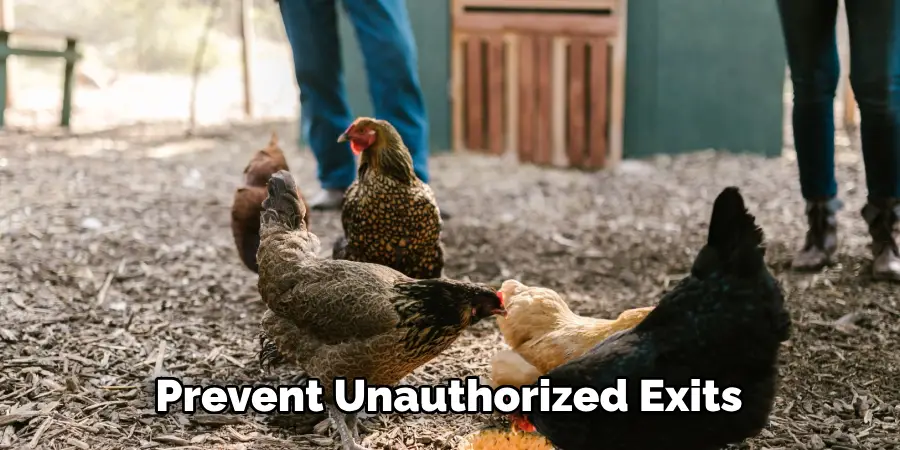
7. Provide Enrichment Activities:
Keeping chickens mentally stimulated and engaged can reduce the likelihood of flight attempts out of boredom or curiosity. Provide enrichment activities such as hanging treats, puzzle feeders, or foraging areas to keep chickens entertained and occupied. Rotate enrichment options regularly to maintain interest and prevent habituation.
8. Redirect Flight Impulses:
Redirecting chickens’ natural instincts to explore and forage can help deter flight attempts. Provide alternative activities and stimuli such as dust bathing areas, scratching pads, or pecking toys to redirect their attention and energy. Encourage natural behaviors within the enclosure to satisfy their instinctual needs without resorting to flight.
9. Train Chickens to Return to the Coop:
Training chickens to return to the coop on command can help prevent escape attempts and encourage them to stay within the designated area. Use positive reinforcement techniques such as treats or verbal cues to teach chickens to respond to your signals. Practice regular training sessions to reinforce desired behaviors and strengthen the bond between chickens and their caretaker.
10. Select Appropriate Breeds:
Some chicken breeds are more flight-prone than others due to their size, weight, and natural instincts. When selecting breeds for your flock, choose those known for their docile temperament and lower propensity for flight. Breeds such as Orpingtons, Sussex, and Wyandottes are generally heavier and less inclined to fly compared to lighter breeds like Leghorns or Easter Eggers.
Conclusion
In conclusion, preventing chickens from flying is a manageable task with the right approach and strategies in place. By understanding the factors that contribute to chicken flight and implementing effective containment measures, backyard poultry keepers can ensure the safety and security of their flock. Whether it’s through regular wing trimming, providing sufficient shelter and roosting spaces, or erecting physical barriers, there are numerous options available to keep chickens grounded and contained within their designated areas. Thanks for reading, and we hope this has given you some inspiration on how to keep chickens from flying!
About
Outdoor Fixes is a distinguished figure in the world of Diy design, with a decade of expertise creating innovative and sustainable Diy solutions.
His professional focus lies in merging traditional craftsmanship with modern manufacturing techniques,
fostering designs that are both practical and environmentally conscious. As the author of diy,
outdoorfixes delves into the art and science of outdoorfixes-making, inspiring artisans and industry professionals alike.
Education RMIT University
(Melbourne, Australia) Associate Degree in Design (Outdoor Fixes) Focus on sustainable design, industry-driven projects,
and practical craftsmanship. Gained hands-on experience with traditional and digital manufacturing tools, such as CAD and CNC software.
Nottingham Trent University
(United Kingdom) Bachelor’s in outdoorfixes.com and Product Design (Honors) Specialized in product design with a focus on blending creativity with production
techniques. Participated in industry projects, working with companies like John Lewis and Vitsoe to gain real-world insights.
Publications and Impact
In diy, Outdoor Fixes his insights on indoor design processes, materials, and strategies for efficient production.
His writing bridges the gap between artisan knowledge and modern industry needs, making it a must-read for both budding designers and seasoned professionals.

